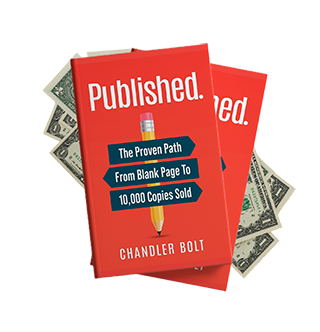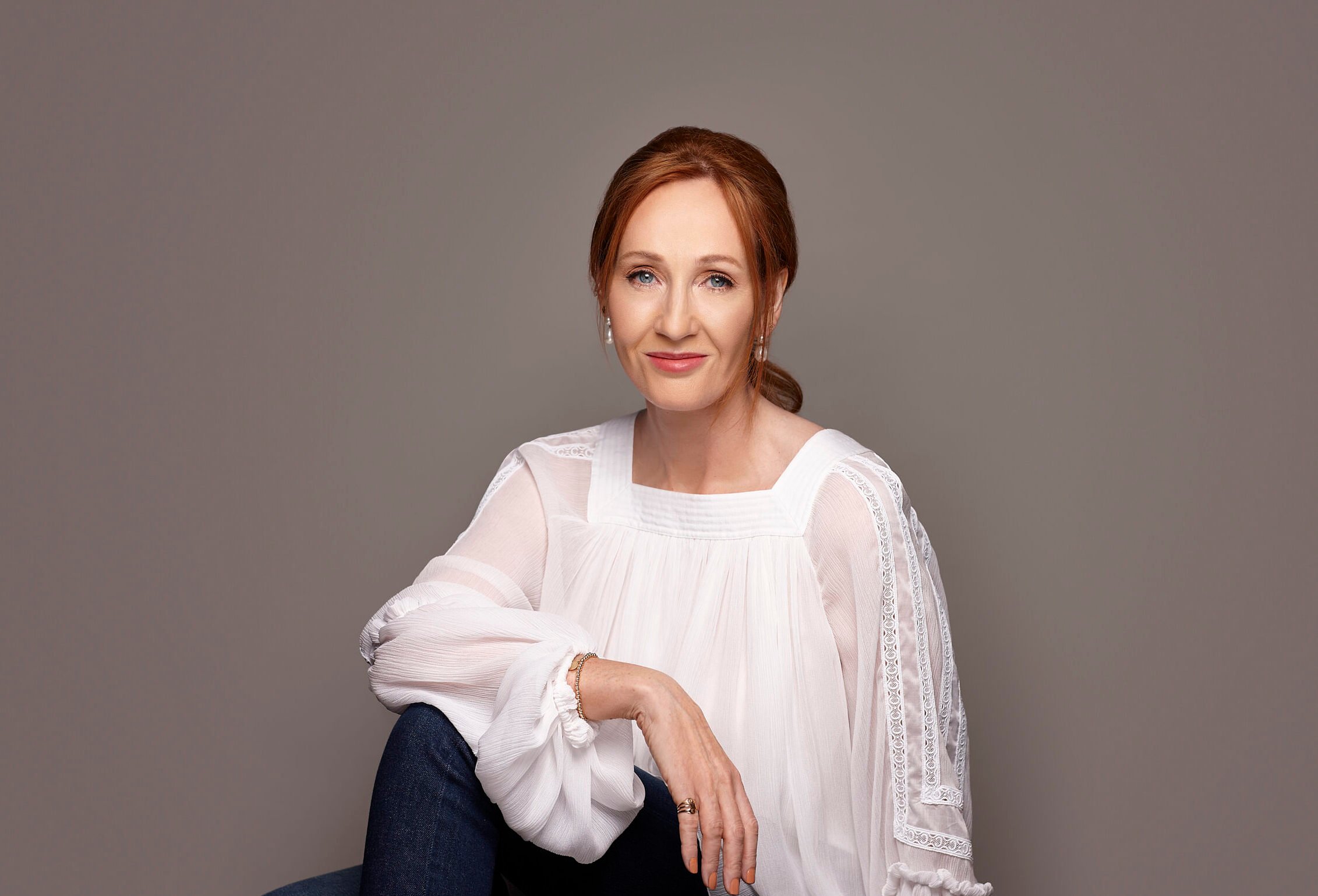Your author media kit, or press kit, is a thought-out, tangible way to promote yourself and your book with the intention of landing some form of publicity. And today we’re going to help you create a successful one.
When creating your author media kit, it’s crucial to first consider your audience. Just as your book proposal is not for your readers, neither is your media kit. This kit is for potential interviewers, bookstore owners, bloggers, or anyone who may be interested in featuring you or your book.
Think of it as a tangible elevator pitch: Your pitch tells your entire story (ending included) so editors, marketers, etc., know what they’re working with.
Your marketing kit should include material that gives potential marketers information about you. Not teaser material, but concrete examples of your credibility as a writer, and of course, an excerpt from your book.
As we go through these three points, keep this one question at the forefront of your mind: What makes me and my book unique?
What is an Author Media Kit?
Your author media kit is your writing resume. Remember graduating high school or college and needing a resume to land that first job? Maybe you spent hours organizing your past experiences into perfect bullet-point lists with engaging headers.
Today, you may put your work experiences online via LinkedIn or a page on your author website.
In a resume, you’d include your contact information, who you are, what you do, etc. The same is true for your author media kit.
What is in an Author Media Kit?
When creating your kit, start by going through this checklist. You may want to exclude one more of these points, or include additional points, depending on who you send your media kit to (a TV station will need different content than a blogger).
To start, here is what should be in your author media kit:
- Cover sheet (think of it as a title page for your kit)
- Author name (if you write with a pen name, use it)
- Contact information
- Website link
- Author biography
- Author headshot
- Business card
- Endorsements or testimonials
- Recent articles
- Best press mentions (or if you’re just starting, your most recent will work as well)
- Book excerpt
Feel free to include details unique to you as an author or to your book. If you have merchandise for readers and it sells well, this may be beneficial to include. Perhaps you write a middle grade series set at a summer camp and you happened to be the head of camp activities for ten years.
This detail would reinforce why you are uniquely credible to author this series.
Why Does an Author Media Kit Matter?
The above list may seem a bit overwhelming, or maybe you feel unsure about the time commitment necessary for creating an author media kit, so remember why it matters.
If you want to land a TV interview, it’s important to present yourself in a credible way.
As a writer, the majority of your time should be spent writing, but you also need to market yourself if you’re going to build a strong readership.
Social media is one way to market yourself. However, if your social media is full of salesy posts, you’re likely to lose followers, and therefore, potential readers.
Landing author interviews, getting shelf space in your local bookstore, and guest blogging are all ways to build your following without going on social media simply to post links to buy your book.
But how do you gain author interviews, shelf space, or blogging opportunities?
It starts with credibility.
Your local news station isn’t going to give that time slot to just anyone.
Creating a professional author media kit is a great way to boost your credibility for those who don’t yet know your name or your work.
It’s one thing to say, “I wrote a book and it’s on Amazon, will you interview me?”
It’s another to say, “Here is a kit of my work, endorsements, previous interviews, and an excerpt from my book. I think your viewers would connect with my book and I would love to share my story with them. My contact information is on page one. Thank you for your time!”
If you’re still unsure why you need an author media kit, think of it this way: You are a professional in your chosen field and need something to represent your work.
Actors have acting reels: A several-minute highlight reel of their best acting from the different TV shows, films, or commercials they’ve been in. Models have portfolios of their headshots, photos from their varied work experience, or both. Photographers have online galleries of their past bookings.
In every instance, the professional’s work is condensed into an easy-to-see format that showcases the work experience and is presented in a credible and engaging way.
The same should be true for you.
Now that we’ve discussed the importance of creating an author media kit and what to include, how do you actually make one?
How to Make an Author Media Kit: 13 Simple Steps
Here are the steps you should take when creating an author media kit for your book.
1. Set Up a Google Folder
One of the simplest ways to create an author media kit is in Google Drive.
You can always use Dropbox or another file-sharing service if you are more comfortable with it, but Google Drive is very easy to use, even if you’ve never tried it before!
Create a dedicated folder in Google Drive for your media kit.
Name the folder something along the lines of “Media Kit for <Insert Book Title Here>”
Once you are finished with your media kit and ready to share it, you will want to right click on the folder, click on “Share,’ and change viewing access so that anyone with the link can view your author media kit.
Important: Make sure you are only giving people permission as a Viewer, not an Editor. You don’t want them changing or deleting anything in your kit by mistake!
2. Upload Your Book Cover
You should upload a high-resolution image of your book cover design to your kit. You can also include any images related to your book cover, like promotions that include your cover image.
3. Add Your Contact Information
If they are interested, media outlets will want to contact you. So make sure they can! Make sure to include your full name, email address, links to social media platforms, and the name of your agent or any other representatives if applicable.
Use the exact spelling for you author name that you have on your book cover. If you use your middle name or initial, include this in your name.
4. Put in Your Author Bio
An author bio gives you credibility and helps people to understand your writing at a glance. This bio can be written in first person or third. First will have a more personal touch, but if you do choose to go with first person, make sure it’s still professional.
You can read other author bios for inspiration, and even practice writing a bio in a few different styles to see what fits.
5. Create (And Confirm) Your Website Link
Briefly click through your website pages to ensure everything is in working order and that your author bio on your website correlates with the author bio in your media kit. If you need to make any updates to your author website, do it before submitting your author media kit.
6. Use Author Headshots
You don’t need a million photos in your media kit, but I recommend you have one landscape, one portrait, and one square headshot in your kit. These headshots should be taken by a professional photographer. A professional will help you with posing and background.
Usually a blank wall in soft natural light works well, for your headshots. Just make sure you dress in a way that best presents you and your author brand, and that your personality comes through in the shot.
7. Create a Business Card
You can create your own business cards quite easily. A simple online search will provide you with numerous options. If you feel uncomfortable with design, hiring a professional graphic designer may help you reach your desired outcome with less stress.
8. Share Book Information
Create an information sheet for your book that gives readers a quick overview of the material. This should include:
- Book title
- Author name
- Page count
- Genre
- ISBN number
- Publisher
- Publication date
- Sales price
- A book synopsis (You can even include an excerpt of the first chapter or two.)
- What formats your book is available in
- A list of retailers your book is sold at
- Some top reviews for your book
- Links to other books you’ve written
9. Provide a Q&A Sheet
Not everyone will have time to read your whole book, or even the excerpt you provide them. That’s why it’s always good practice to include a question-and-answer cheat sheet with potential discussion points for an interview. This will help media outlets to see how any interview with you would go. It may also inspire them to ask some questions of their own.
Not only does providing a list of discussion topics make an interviewer’s job easier, it also helps you dictate the trajectory of the interview.
Try to include around ten questions with short answers. Think about questions your readers would have about you or your book, such as what inspired you to write it, if you had any difficulties in the writing process, any advice you would have for new authors, or maybe a tease about a future work.
10. Throw in Some Recent Work
If you have any recent writing samples, put them in! Just make sure to give them a quick read-through for any typos first.
11. Include Your Best Press Mentions
You don’t need to go overboard with this, but don’t be shy either. Your media kit needs to present a clear and accurate picture of both you and your book. If you’ve had any fabulous mentions in the press, include them! You should show off a little bit. You’re trying to market yourself, after all.
12. Consider An Audio File
Are there any locations or character names within your book that people have trouble pronouncing? Then it would be a great idea to record an audio file with the proper pronunciation in your media kit. This will help interviewers avoid any embarrassing moments during your interview.
13. Create a Cover Sheet
Once you have your author media kit exactly how you want it, it’s time to make a cover sheet. This sheet will tell readers on what page to find all the different information within your kit. You should only create this after you’re satisfied with everything. If you change wording, it can change page numbers, and you will have to redo your cover sheet!
Get Your Work Out There!
Now that you have your author media kit completed, it’s time to send it out into the world.
A great place to start is by creating a page on your author website. Simply create a new blank page, title it appropriately (something like “example.com/media-kit” works well), and reformat your media kit onto this page.
You may also want to create a PDF form on your website. This allows for easy download access as well as printing if a particular company asks for a hard copy.
Now, when a TV station, blogger, or interviewer asks for your media kit, you can respond in a timely manner with zero stress.
Creating your very own author media kit is no small feat.
You took the time to do the appropriate research and create the best product you could. Celebrate your accomplishment.
Then get out there and start interviewing.
It’s time to promote your book!




